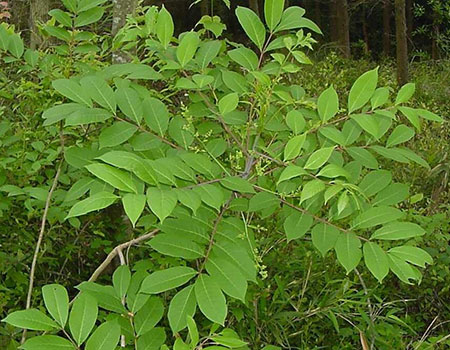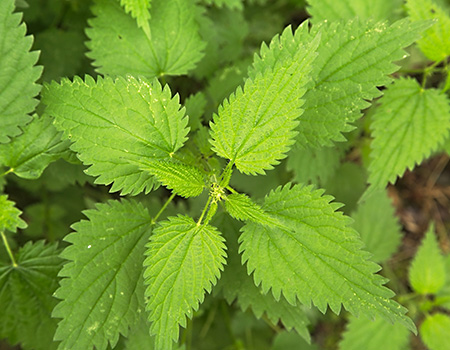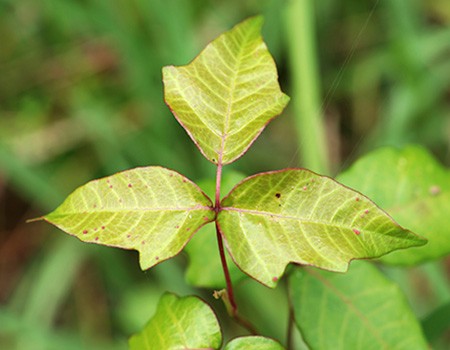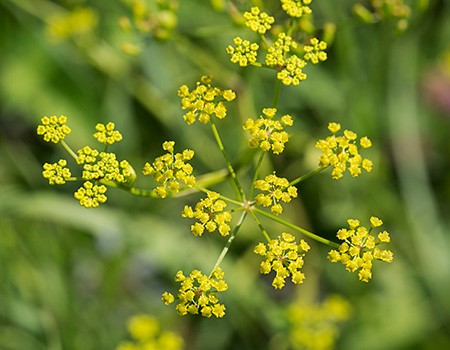Wondering which plant is the root cause of your summer rash?
Look no further to better understand each plant rash. Below is a quick guide to the most popular poisonous plants in central Wisconsin.
Poison Ivy
Location: Pastures, roadsides, damp forests.
Description – Leaves: Divided into three green leaflets, vary in size, shape and appearance, may turn yellow, orange or red in fall. Flowers: Greenish-yellow in clusters near the stem. Fruit: Yellowish-white round berry with stripes. Poison oak looks similar but with more lobes on the leaflets.
Toxin – Roots, stems leaves, flowers and fruit contain oils that cause skin irritation and blisters. Symptoms occur within 24 hours of exposure.
Treatment – Wash with regular or specialized soap (such as Tecnu) and water ASAP to prevent rash.
Care My Way® gives quick treatment for common conditions like poison ivy rashes. Download the app to get started.

Poison Sumac
Poison sumac
Location – Wet areas such as floodplains, swamps and bogs.
Description – Shrub or small tree, 5- to 25-feet high. Leaves: Seven to 13 leaflets glossy green on top and pale green on bottom. Fruit: Ivory to pale green and hang in about 8-inch long loose clusters.
Toxin – Contact causes blisters with 24 hours.
Treatment –Wash with soap and water ASAP.
Photo by Norman Melvin, hosted by the USDA-NRCS PLANTS Database
Wild parsnip
Location – Roadside ditches, wasteland and ungrazed grassland.
Description – Stem: 3-to 5-feet tall. Flowers: Five yellow pedals arranged in clusters. Leaves: Toothed margins and alternate along the stem.
Toxin: Plant sap from broken leaves or stems touches skin. Can turn affected area red like a sunburn. In serious cases, the skin turns red then blisters. If sap on skin is exposed to sunlight, it can form blisters.
Treatment: Wash ASAP, burning is relieved by covering affected area with cool, wet cloth. Avoid rupturing blisters. Contact doctor if extensive blistering.

Stinging Nettles
Stinging nettles
Location: Grows in full sun in damp, fertile soil such as in canals, barnyards and fencelines.
Description: Perennial plant 2-to7-feet tall. Stem: Square, rigid and covered with stinging hairs. Leaves: Dark green and opposite of each other on stem, 3-to 6-inches long, sawtooth edges and stinging hairs.
Toxin: Stinging hairs can cause welts, inflammation and a burning sensation on contact.
Treatment: Remove hairs with tape or tweezers. Cooling creams, lotions and anti-itch creams reduce symptoms.
If you have been outside in hot sun, your skin rash may also be caused heat rash. Read our post about heat rash for more information.
For questions about rashes, talk to a Marshfield Clinic Health System provider.
Schedule appointment Message your provider




Would have been helpful if you included photos of the different rashes.
Hi Mary, That is a good suggestion. I will bring it forward for future improvement. Thanks, Jordan
An additional aid with nettles can be used immediately: Crush up the leaves of the mullein plant and rub it on the rash. This can help neutralize the sting from the nettles toxin. Mullein often grows near areas where nettles are growing. Mother Nature's way of providing a cure for her ailments. (Yes, this works. I use it often.)